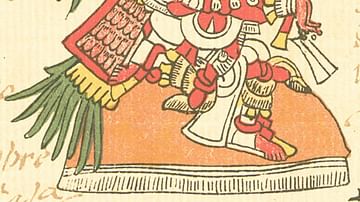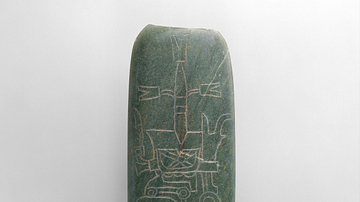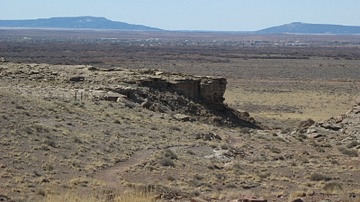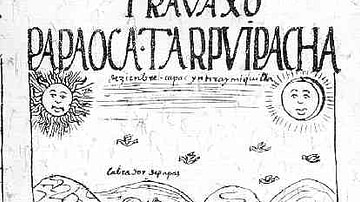Search
Did you mean: Empire?
Search Results

Definition
Tlahuizcalpantecuhtli
Tlahuizcalpantecuhtli, 'Dawn Lord,' was a Mesoamerican god who represented a menacing aspect of Venus, the morning star, and was one of the four gods which held up the sky. The people of the ancient Americas believed his rays could damage...

Definition
El Tajin
El Tajin is located near the coast of eastern Mexico and was an important Mesoamerican centre which flourished between 900 and 1100 CE. A part of the Veracruz culture, the city's architecture also displays both Maya and Oaxacan influences...

Definition
Salado Culture
The Salado culture is a term used by historians and archaeologists to describe a pre-Columbian Southwestern culture that flourished from c. 1200-1450 CE in the Tonto Basin of what is now the southern parts of the present-day US states of...

Definition
Casas Grandes
Casas Grandes or Paquimé was a major pre-Columbian city that flourished due to its extensive trading networks between c. 1150/1200-1450 CE in the northwest of present-day Chihuahua, Mexico. Casas Grandes is one of the largest and most important...

Definition
Wanka Civilization
The Wanka (also Wanca or Huanca) people occupied the highlands of ancient central Peru around Lake Junin and the Manataro, Chanchamayo and Tarma rivers. The culture flourished from the Middle to Late Horizon periods (600 CE - 1532 CE). Dwelling...

Definition
Audiencia
An audiencia began as a judicial institution in medieval Spain, but in the 16th century, it was applied as the highest form of local government in key cities of the Spanish Empire. An audiencia had a panel of judges made responsible for the...

Image
Olmec Celtiform Ax
Jadeite celt, 10-4th century BCE, Mexico, Mesoamerica Metropolitan Museum of Art About 1000 BCE, celts-elongated, elliptical ground stone tools-would acquire meaning beyond their workaday function. When made of greenstones such as the...

Definition
Homolovi
Homolovi or Homolovi State Park (formerly: Homolovi Ruins State Park) is a cluster of archaeological sites that contains the ruins of eight pre-Columbian Ancestral Puebloan (Anasazi) and Hopi pueblos in addition to some 300 other remains...

Article
Ancient Egyptian Agriculture
Agriculture was the foundation of the ancient Egyptian economy and vital to the lives of the people of the land. Agricultural practices began in the Delta Region of northern Egypt and the fertile basin known as the Faiyum in the Predynastic...

Article
Daily Life in the Inca Empire
Daily life in the Inca empire was characterised by strong family relationships, agricultural labour, sometimes enforced state or military service for males, and occasional lighter moments of festivities to celebrate important life events...